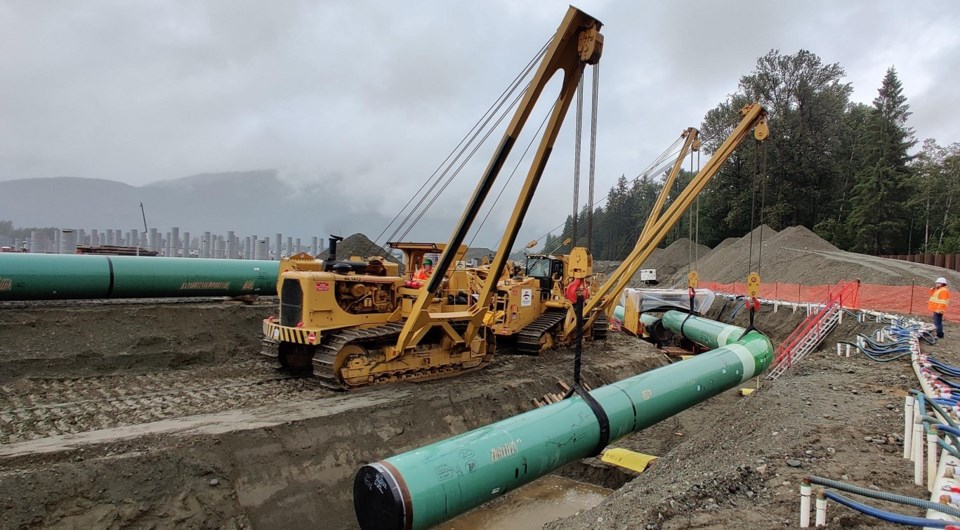The B.C. government has fined a company $170,000 after several inspections on a $6-billion liquid natural gas pipeline it's building in the province’s north found repeated problems with earth eroding into nearby fish habitat.
According to a 2014 environmental assessment certificate, Coastal GasLink Pipeline Ltd. must take measures to protect sensitive wetlands, rivers and streams from the dangerous effects of eroded sediment on water quality.
During several inspections, stretching from October 2021 to April 2022, environmental assessment officers found repeated breaches of their legal responsibilities to protect the environment along the pipeline’s right-of-way.
In one series of inspections carried out in April 2022, officers found the company was “pumping sediment-laden trench water directly into a wetland.”
In a statement Monday, the Ministry of Environment and Climate Change Strategy said the “financial penalties mark an escalation of enforcement action to address the issues.”
At $170,100, this is the second administrative penalty issued to the company this year. The first $72,500 penalty was handed down in February.
According to the ministry, more than 40 inspections have been carried out since the project began construction in 2019. In addition to the two administrative penalties, 37 warnings and 16 orders have been issued to the pipeline company.
“The EAO (Environmental Assessment Office) continues to actively monitor the conditions of the environmental assessment certificate for the construction of the Coastal GasLink pipeline project to ensure potential impacts to the environment and wildlife are mitigated,” noted the EOA in a press release.
Once completed, the Coastal GasLink pipeline will stretch 670 kilometres from gas fields near Dawson Creek to a massive processing and export facility currently under construction in Kitimat.
The pipeline and LNG Canada processing facility have sparked widespread opposition among environmentalists, who say the project siphons investment away from renewable energy and will make it impossible for B.C. to reach its emission reduction targets.
The B.C. government, on the other hand, maintains the massive gas project is tailored for a world shifting toward renewable energy, where “global markets are expected to favour lower-carbon natural gas producers.”
Coastal GasLink has signed project agreements with 20 First Nations along the pipeline’s right-of-way but has run into a standoff in Wet’suwet’en territory south of Houston.
Where elected Wet’suwet’en chiefs have been in support of the pipeline, hereditary chiefs have not and claim the authority of the elected chiefs and councils along the pipeline route is limited to reserves created under the Indian Act. Traditional lands on unceded territory, they say, remains under their authority.
Those hereditary chiefs and their supporters have blockaded the pipeline right-of-way over the last several years, claiming the company failed to gain consent to build on their traditional territories.
In 2020, the they issued an eviction notice to Coastal GasLink, sparking Canada-wide protests and several rail blockades in support of the First Nation.
Over the past three years, police have arrested over dozens of people along the pipeline right-of-way, including land defenders, legal observers and journalists under a court-ordered civil injunction.
The latest round of arrests began in the fall of 2021 when land defenders set up a blockade on the shores of the Morice (Wedzin Kwa) River southwest of Houston, B.C.
At the time, Coastal GasLink said it was using a micro-tunnel method of drilling that “does not disturb the stream or the bed and banks of the river.”



